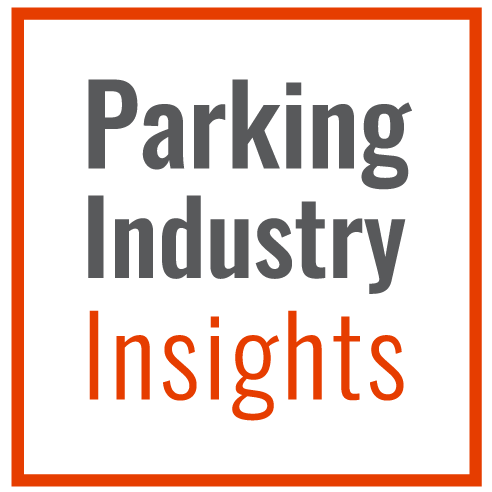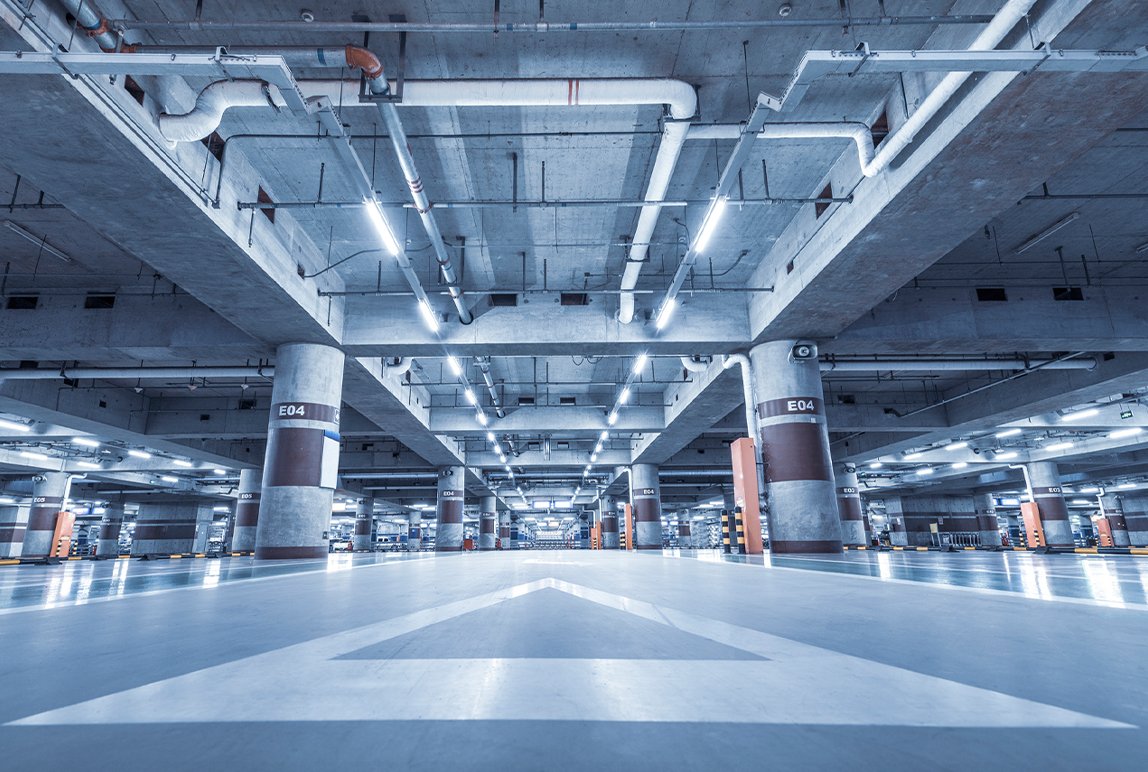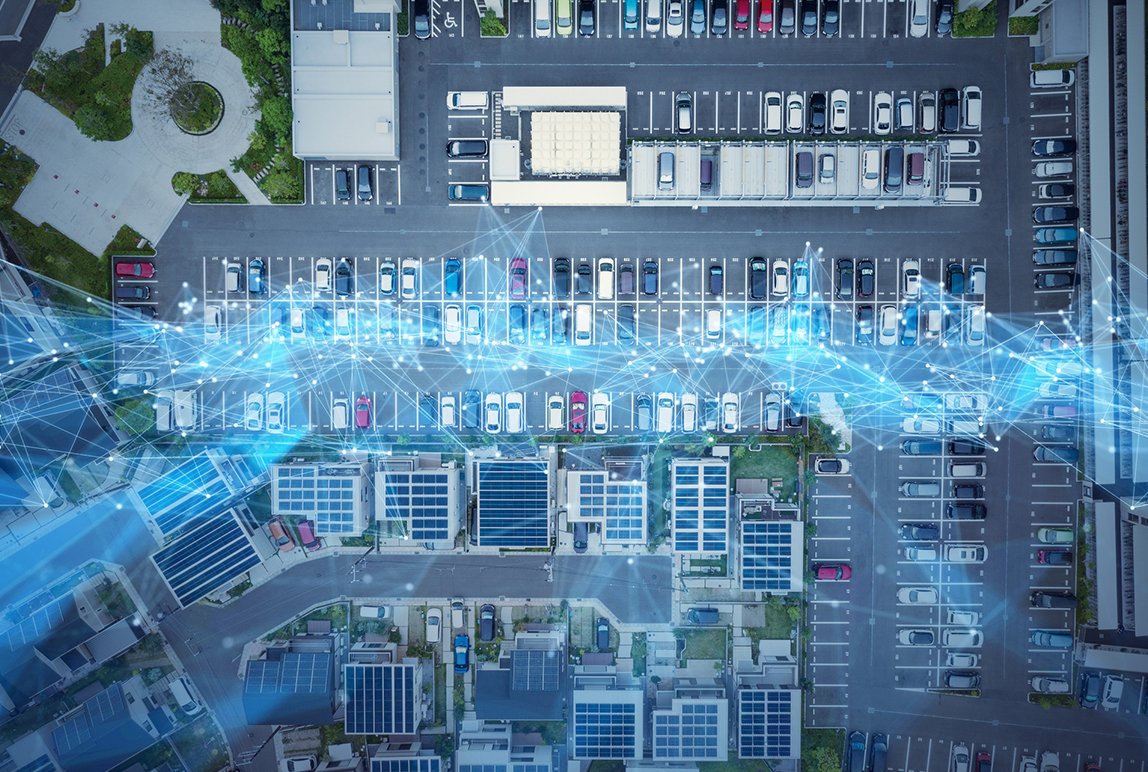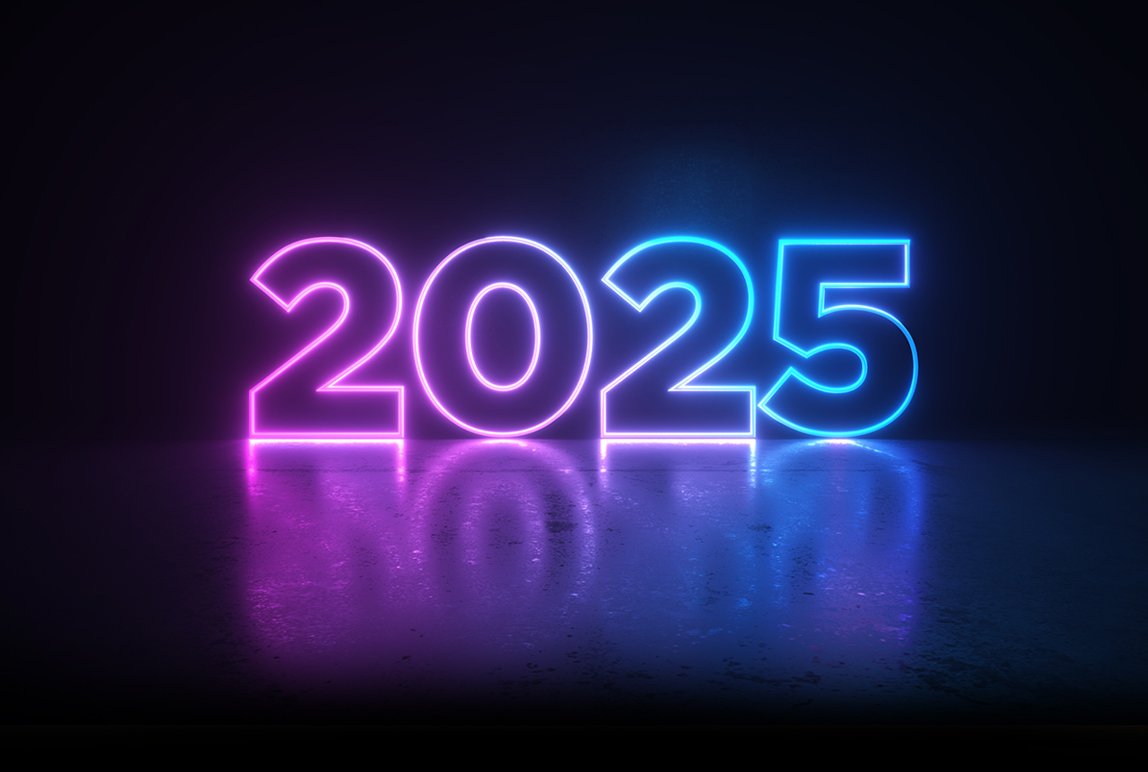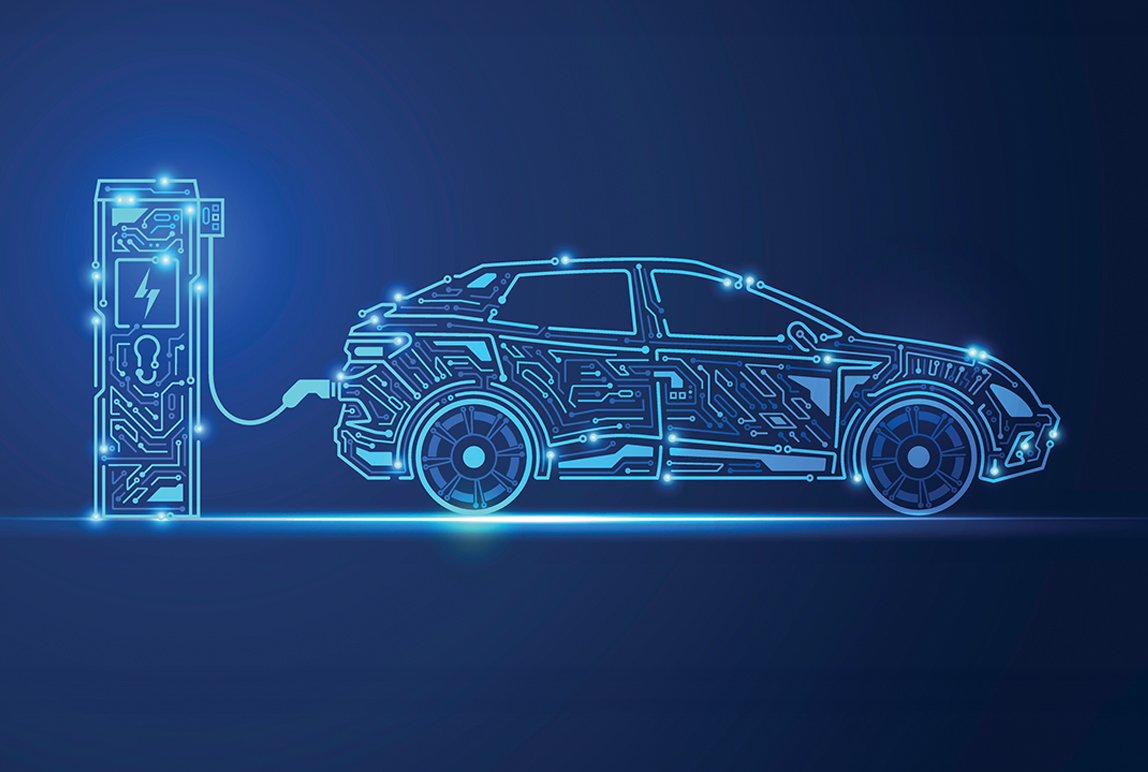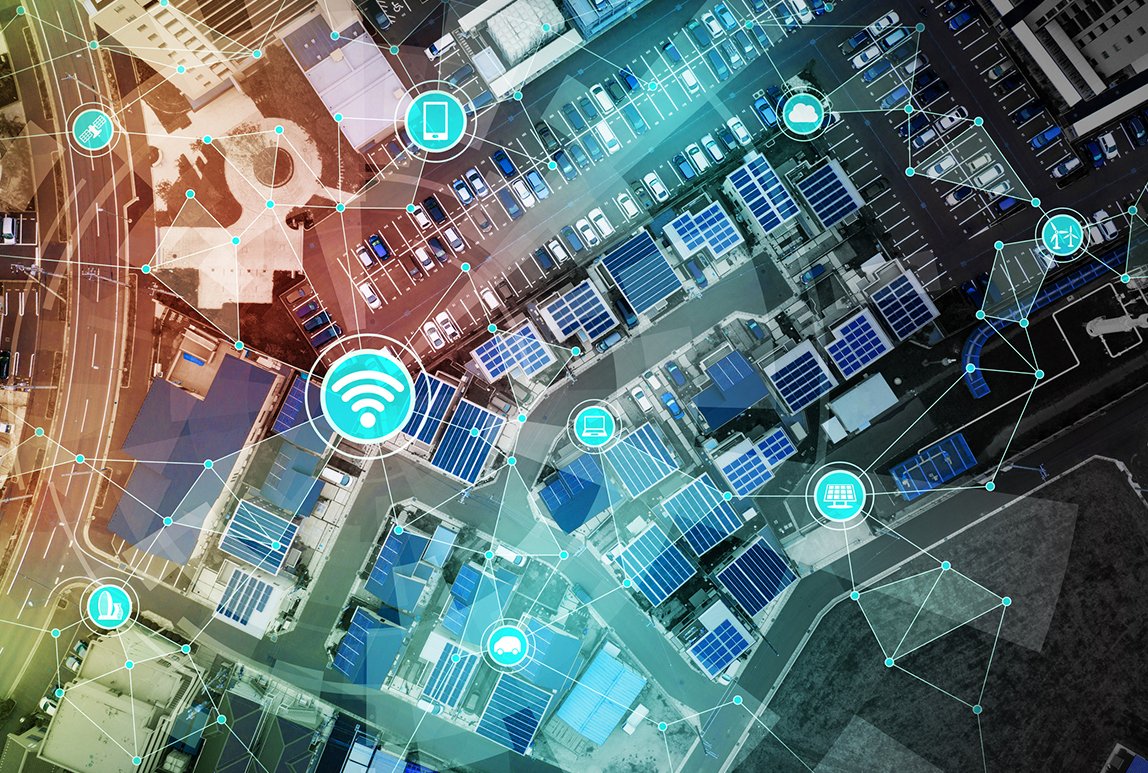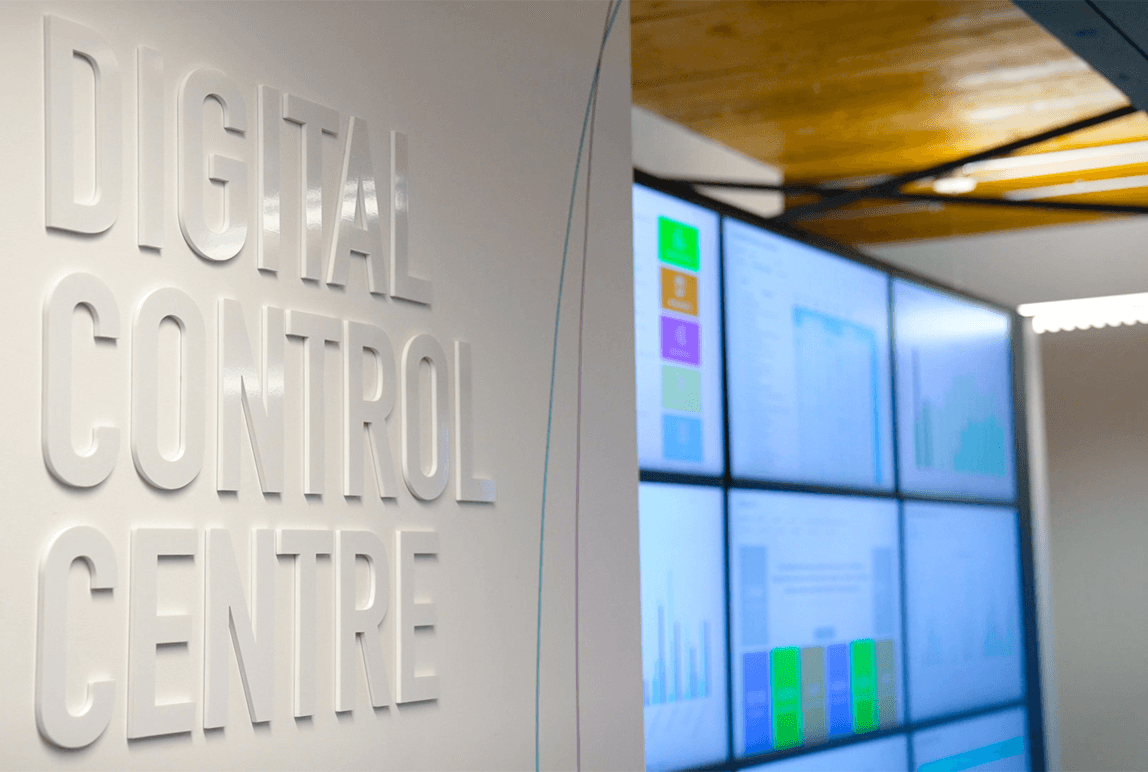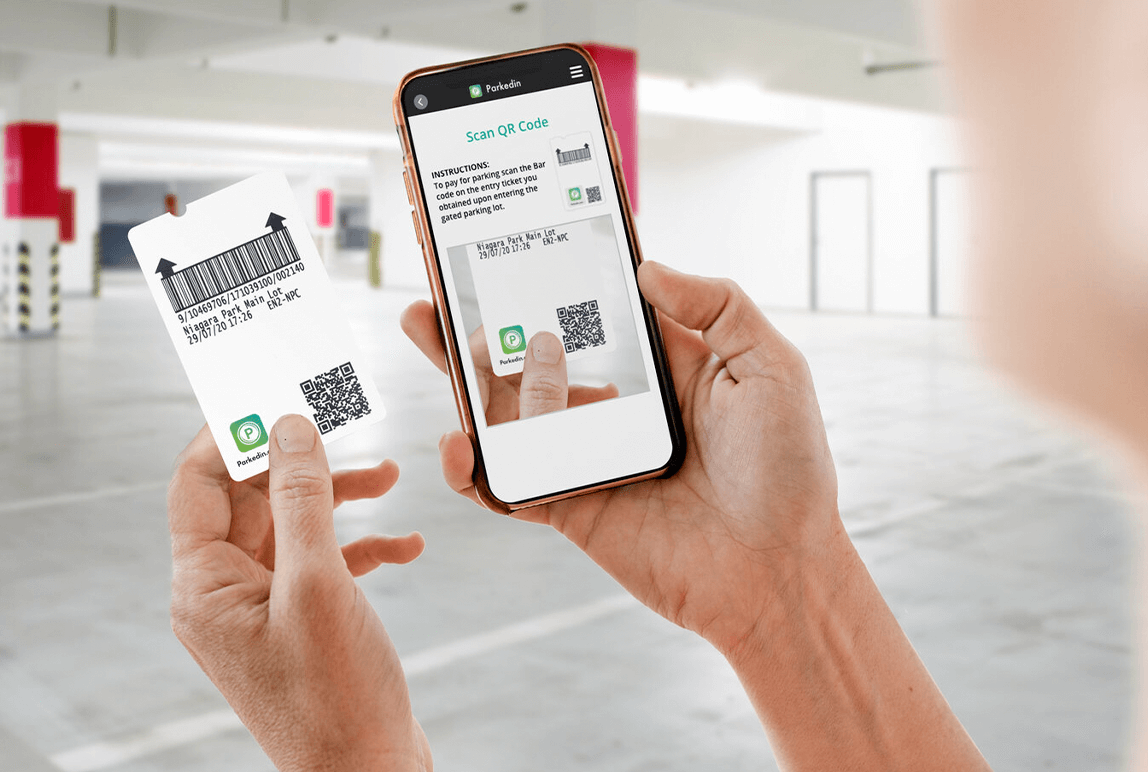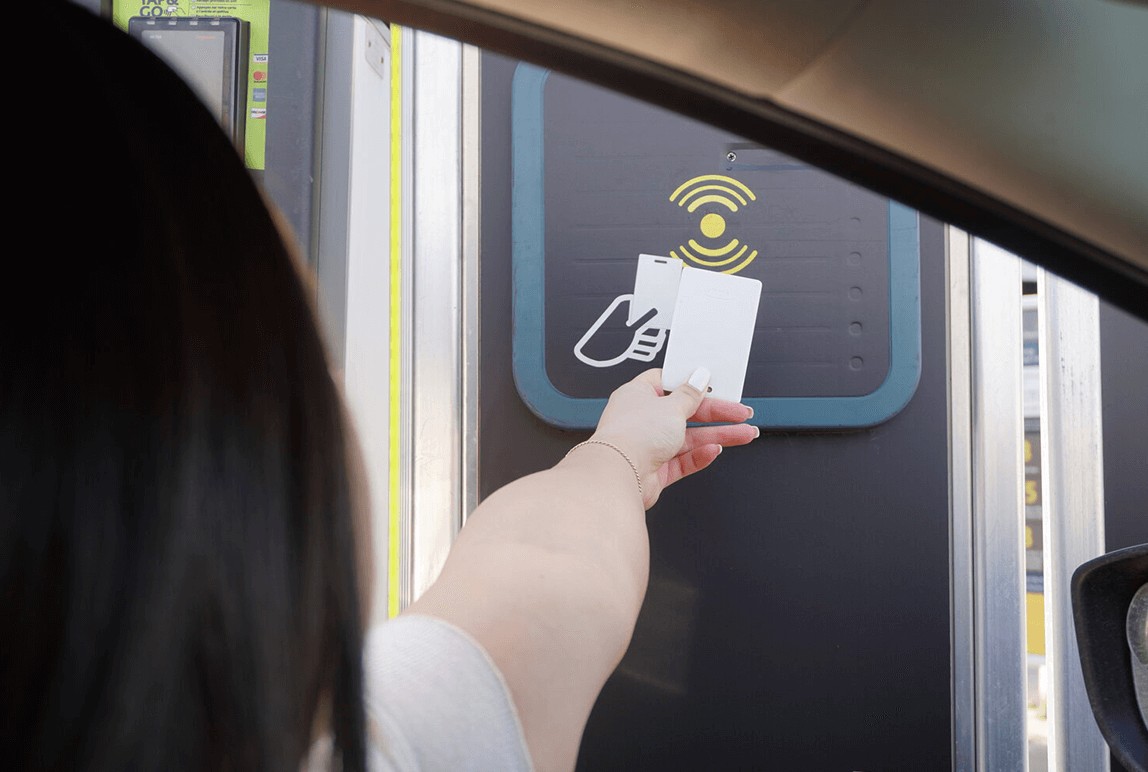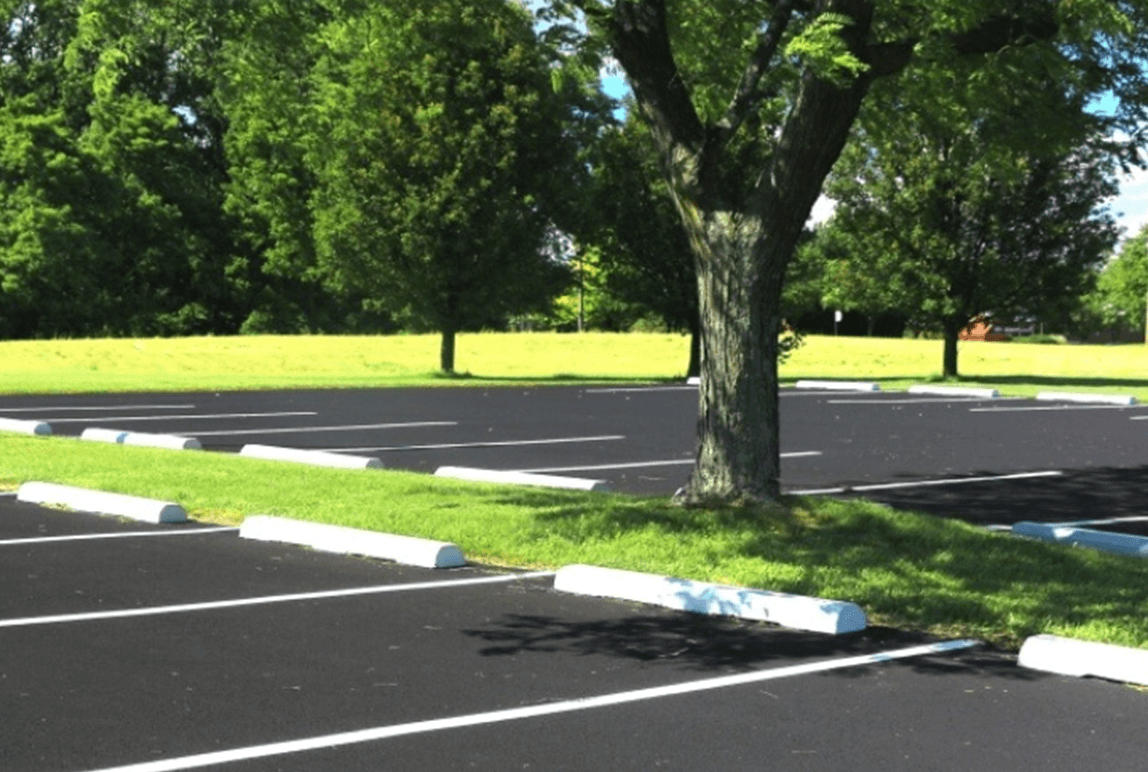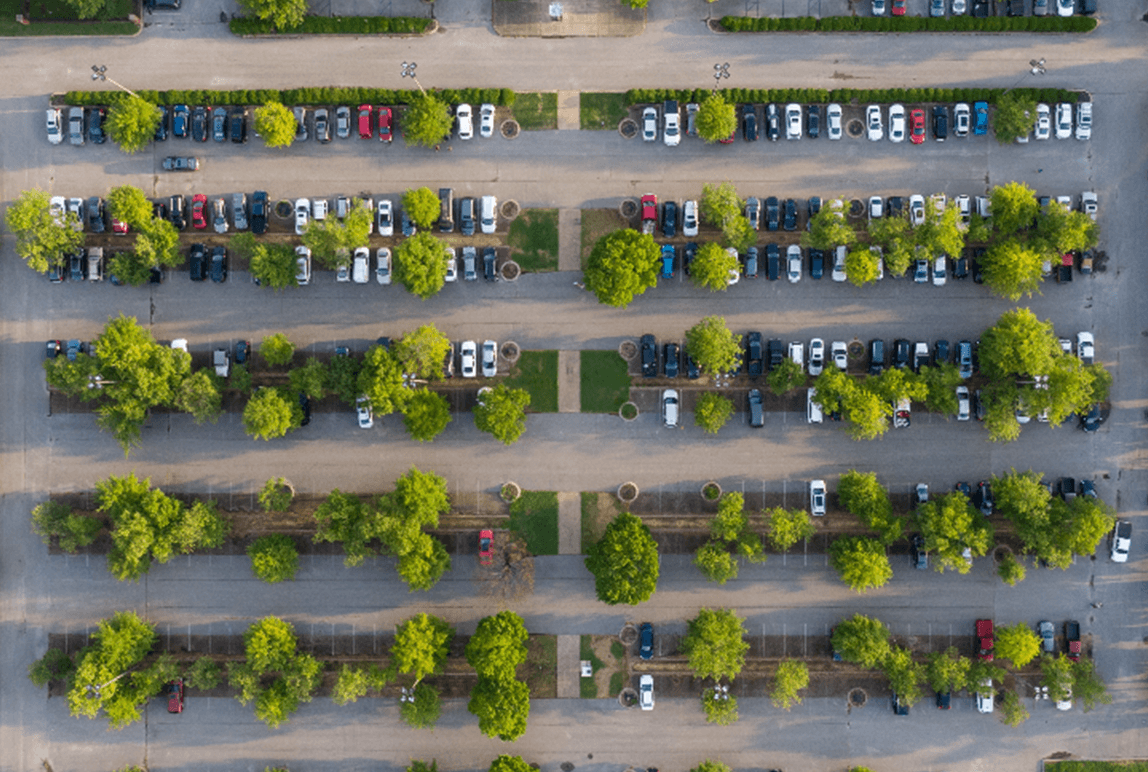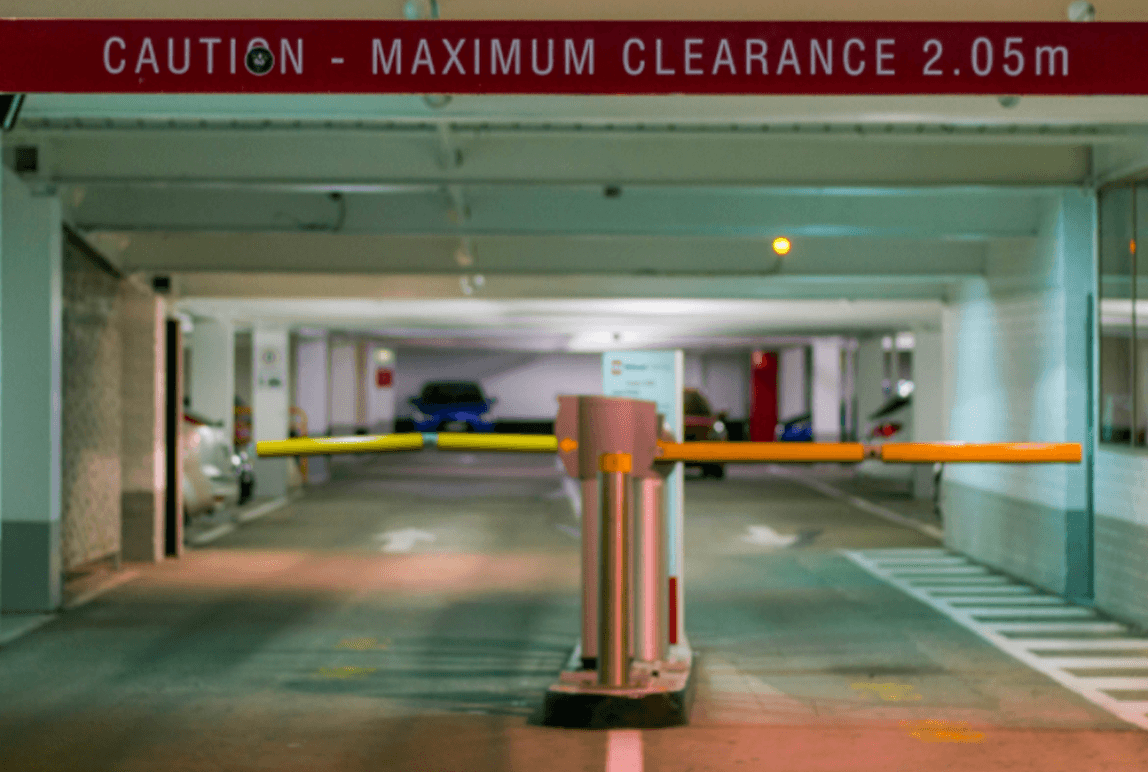Multimodality and Parking: the End-to-End Customer Journey with Parkedin
Posted: August, 16, 2021 9:23AM ET • 16 min read
Introduction
The last mile of any journey is often the most fraught.
This phenomenon was first conceptualized by utilities and communications providers that were able to, for example, deliver their products to a neighbourhood fairly easily but then experienced challenges connecting individual homes.
Likewise, logistics companies can easily coordinate delivering a large number of goods to a central depot, but often experience difficulty finalizing the delivery to individual homes because a signature is required but the homeowner isn’t available. It’s also the most expensive and time-consuming part of the logistics lifecycle, so there’s a great deal of interest in finding more efficient solutions.
Similar matters occur in the realm of parking: getting to a concert venue downtown is easy enough, but finding an affordable parking space nearby can be consuming.
As an increasing proportion of the world’s population lives in urban centres and those centres become increasingly dense, we can expect these dilemmas to worsen over time. To address these matters as they arise, companies are leveraging people’s interconnectedness with technology to develop solutions that are flexible and sustainable.
As a leader in technology-forward solutions to manage parking access and revenue control in the Canadian market, Precise ParkLink is at the forefront of these innovations.
And if we want to stay there, we need to ask ourselves three important questions:
What does last-mile technology include in the context of the parking industry?
How does it fit into broader trends in urban mobility?
What are we doing today to build toward this connected future of urban mobility?
Last-Mile Parking Technology
Nearly 98% of parking transactions today leverage technology at some point in the transaction process. This includes anything from a driver visiting a pay-on-foot kiosk on their way back to their vehicle before leaving a parking garage, looking online to compare rates near their intended destination, to scanning a QR code posted near a parking meter to pay for a session without touching a machine.
In the context of the parking industry, last-mile technology includes everything that makes the driver’s life simpler and more convenient and lets them get to their destination more quickly and efficiently. In practical terms, this means reserved parking with ancillary services like electric vehicle (EV) charging and detailing, or apps that locate available parking stalls, give you turn-by-turn directions to your reserved stall, and pay for your session all in one convenient place.
Municipal governments’ Sustainable Urban Mobility Plans (SUMPs) are increasingly looking at the health and economic impacts of poorly designed and executed transportation patterns within their jurisdictions. By some estimates, as much as 40% of inner-city traffic is caused by drivers looking for parking, often circling a block several times before they find a space. This takes time away from productive work and the emissions that result are detrimental to urban air quality.
To address these failings, the trend in urban mobility is to favour seamless mobility experiences and build momentum toward large-scale implementation by incentivizing early adoption of these technology-forward solutions.
Parking equipment suppliers and management companies that exist today will need to have a firm grasp of the emerging trends in urban mobility, and remaining profitable will mean proactively anticipating and gearing up for changes in the urban mobility market.
Trends in Urban Mobility
The world’s population is becoming increasingly concentrated in dense urban centres, which has significant impacts on energy demand and air quality in cities.
And as services and amenities that cities offer are increasingly concentrated downtown, demand for real estate in city cores goes up, and as demand for space rises, so too does the cost. The rising cost of housing in city centres means that fewer people have the space or disposable income to dedicate to a private vehicle, and as they live closer than ever to work and entertainment, many find they need a car less and less often, making that purchase even harder to justify.
A market for personal mobility will always exist but it’s no longer enough to think of urban mobility as being about parking exclusively — specifically, where to find it and how to pay for it.
So what trends in urban mobility have we seen emerge, and how do technology integrations align with them?
Mobility as a Service
On average, cars are stored twenty-three hours a day, which used to mean parking was critically important to people’s mobility needs.
Today, as people live closer to work and demand for space downtown makes it prohibitively expensive to park at work, even those who still choose to own a private vehicle are increasingly opting to commute to work on public transit and save their car for weekend trips to big box stores.
Having cars sit idle for much of the week but nevertheless having to pay a premium for storing them at home makes them an even more difficult financial burden to justify for many people. To meet the still-present demand for occasional personal mobility, residents of urban centres can take advantage of demand-based mobility services that connect them with drivers able to transport them to their destination.
By optimizing car-ownership in this way, one shared vehicle replaces approximately eight to twenty private vehicles, whether they are self-driven rentals, taxis, or hailed rides. This cuts down on congestion, reduces the total cost of personal mobility, and adds convenience to the lives of many.
Ride hailing is a fixture of the modern gig economy, but shared mobility has existed for many decades in both static and dynamic models, distinguished by whether the rented or borrowed vehicle is returned to its original location, ready for the next user. And regardless of the mobility-as-a-service model, the service is moving increasingly into the mobile, app-based world, whether to call a ride, reserve a rental, or even unlock a vehicle.
Electric Mobility
A growing proportion of the vehicles remaining on the ground are powered by electricity, whether charged overnight at home, in a couple hours in commercial or professional settings, or in just a few minutes at DC fast chargers.
Regardless of how the electricity is generated, the absence of local emissions improves air quality within cities where congestion and idling are most common, though of course we see the greatest environmental benefit when the electricity is generated from renewable sources.
Governments around the world are encouraging the transition to electric mobility in a variety of ways. For vehicle manufacturers, jurisdictions are mandating total fleet averages for their products’ emissions, resulting in higher-emission models becoming fewer in number and therefore more expensive per unit than their hybrid or electric stablemates.
Following a frank appraisal of their driving needs — usually only a few kilometres a day — many are drawn to electric vehicles because of their lower operating and maintenance costs. Nevertheless, a great deal of skepticism persists, so many governments offer rebates or tax incentives to lower the capital cost of electric vehicles as well.
And despite electric vehicle charging stations being a proven reliable revenue stream both directly through fees and indirectly through increased volumes, incentives also exist for the installation and maintenance of these services, all with a view to rapidly increasing uptake of this new technology.
To meet the growing demand for electricity to power our vehicles — not only cars, but increasingly public transit and commercial vehicles as well — an opportunity exists for utilities companies to make strategic investments in renewable energy sources to ensure the environmental benefits of electric mobility are seen economy-wide and not just in terms of reduced noise and emissions downtown.
Autonomous Vehicles
Not only are privately owned vehicles moving toward full automation as quickly as technology and legislation will allow, but so too will shared vehicles, eventually becoming driverless as their systems are proven robust and reliable. In this latter case, we can expect to see car sharing as we know it continue into the future, except a vehicle is reserved and arrives at your location at the scheduled time.
Full vehicle automation has a number of interesting and exciting implications for the future of urban planning as well. With a significantly reduced need for on-site vehicle-storage, existing surface lots can be converted back to green space, offering a comfortable environment when we need a break from the office and helping keep our cities cool in the summer. And in areas where on-street parking is no longer needed, the space can be repurposed as curbside pick-up and drop-off zone for autonomous driverless taxi services.
What vehicles will remain on the roads will still need to be stored somewhere when not in use, so there will always be a need for parking technology with equipment and integrations to manage their use. But as the automotive industry moves steadily toward full automation, parking operations need to keep pace with credentialing systems that don’t require human intervention; the future of access control is in automatic license plate recognition, automatic vehicle identification transponders, and similar platforms that will let driverless cars come and go as they need to.
Car-to-X Communication
Critically important to achieving full automation of vehicles on the road is fast and reliable car-to-x communication.
This data-driven solution, in its present application, lets vehicles communicate their position and status to the cloud for use by other vehicles; this is what powers the technology behind real-time traffic updates for in-car navigation systems and lets vehicles navigate around heavy congestion.
Traffic signal pre-emption is another common use of car-to-x communication that ensures emergency vehicles have the right of way through intersections. These systems often use GPS or localized radio signals to identify emergency vehicles and prioritize their direction of travel, however more broadly implemented systems have the potential to reduce fuel consumption by avoiding hard acceleration and deceleration when approaching or leaving a set of traffic lights.
As more vehicles integrate with these systems and car-to-car communication becomes more robust, autonomous vehicles can self-organize into convoys. Limiting the human element — timidity, indecision — makes for safer road use for everyone, including pedestrians. Convoys also help to optimize traffic flow by synchronizing the acceleration and deceleration of each member of the convoy, contributing to a significant reduction in congestion on the roads.
As roads become safer and less congested with enhanced car-to-x communication, bicycle ridership will only continue to gain popularity in inner cities as a fast and convenient alternative for short trips. As these technologies are deployed in greater numbers of vehicles of all types, cyclists will no longer need to worry about car doors opening onto them, buses pulling out in front of them, or any number of the other nuisances that presently discourage cycling in the city.
Transitioning to the Future of Parking
Parking equipment manufacturers and suppliers need to remain agile to pivot their business model as the industry evolves or they’ll be left behind. But as competition in the sector is stronger than ever, we need to be proactive in anticipating trends that are about to emerge — and sometimes leading the change ourselves.
Some of the directions we see the parking industry going in will always be outside of a parking equipment supplier’s scope — car-to-x communication, strategic investment in power generation capacity, and urban redevelopment with a focus on greening and sustainability are all fascinating areas of inquiry but should be left to the experts in those fields.
But what is clear for our purposes is that the future is electric, connected, and increasingly autonomous. So how does parking fit into the equation as we transition from where we are now to where the industry is going?
Specifically, how can we align Precise ParkLink’s research and development priorities to target new use cases with innovative solutions while still delivering value to our existing clients with the robust technology they’re accustomed to?
Precise ParkLink’s Parkedin app — available from the App Store as well as Google Play — is still in its relative infancy, but a number of impressive features are already available or quickly approaching the end of their beta testing with select clients ahead of full deployment.
Reservations
Becoming Canada’s leader in the airport vertical has taught us the importance of being able to offer reservations for travellers looking for a worry-free check in and boarding experience.
And the demand for this type of service is easy to understand: especially for those who don’t travel often, the size and complexity of many airport parking facilities can be overwhelming. Our systems already offer integrations with leading platforms, but Parkedin’s forthcoming reservations module brings this functionality in-house.
For more experienced travellers travelling for work, Parkedin lets them extend their business class experience beyond the premium lounge and priority boarding to parking their vehicle and collecting it again afterwards. For example, valet services can collect their vehicle on arrival and make it’s detailed ahead of their return, and if the customer is driving an electric vehicle, they can make sure it’s fully charged by the time they get back — all of this reserved in one place and billed in one place.
And as Parkedin is integrated with more systems from coast to coast, these reservations can be made at both ends of leisure and business travelers’ journeys to maximize their convenience.
Navigation
Any number of apps can let you know where parking lots are located, but few combine the convenience of real-time availability in these lots, the option to reserve a space, and turn-by-turn directions not only to the lot from your present location but within the lot to your exact reserved space.
Building on our integration with the Waze app and our experience integrating between parking guidance systems, dynamic signage, and location-based pricing, Parkedin and the entire Precise ParkLink ecosystem are leading the way in last-mile technology. The app will remind you of your upcoming reservation, give you in-app directions to your destination, guide you to your stall, and give you directions back to your car at the end of your stay.
Payment
To address the need for expanded touchless technology and leveraging the increasing popularity of mobile pay for parking, we’ve made the Parkedin platform just as easy to use whether you’re paying for parking in a gated or non-gated facility. And we’ve made it versatile enough that you don’t even need to download the app to get a lot of the benefits the system offers.
For those customers who are “app-weary,” Parkedin leverages their smartphone’s camera to scan a QR code displayed on or near a meter as a means of identifying the parking zone; likewise, in gated facilities, customers can use their camera to scan a QR code on their entry ticket. In either case, through their smartphone’s web browser, the customer can process their payment through the same secure, Level 1 PCI-compliant payment portal accessed by the app.
Customers — typically those who use Precise ParkLink-equipped facilities more frequently — may opt to download and register for the Parkedin app, available from the App Store and Google Play, which leverages their smartphone’s biometrics, provides transaction histories, displays in-app receipts, and stores customer preferences.
In either case, Parkedin emails transaction receipts — including amount and method of payment, length of stay, and other pertinent details — to customers as part of its PCI compliance requirements.
Loyalty
Loyalty programs — especially ones integrated into the same system you use to reserve and pay for parking — are critical to driving recurring business to parking operators’ facilities and they’re a nice perk for the consumer.
Whether it’s a preferential rate for high-use clients at one or multiple sites or including a valet service with a hotel suite upgrade, programs like this draw new customers in and keep existing customers coming back.
These incentives are also important to business travelers, and the preferential rates or included services can be the deciding factor in your operation’s value proposition for corporate bookings. And with this in place, it’s just a short step to full end-to-end integration of the customer journey, letting business and leisure travelers reserve every step of their journey all in one place.
Programs like these not only connect businesses to consumers to build brand loyalty, but they’re an opportunity for businesses to connect with each other to share the customer experience. By networking in this way, they gain greater visibility, and being part of a customer’s journey so early on makes doing business with a participating company an even easier decision for a customer to make.
This feature will be coming online shortly, and Precise ParkLink is excited to be taking the lead in moving urban mobility one step closer to the future by making customer journeys fast, safe, and easy.
Permits
Virtual permitting is another innovative feature of the Parkedin app.
Leveraging smartphones’ Bluetooth Low Energy capabilities, permits purchased in the Parkedin app will be recognized automatically without having to open the app. This feature is not only convenient but it’s also hands-free in a world that greatly prefers touchless solutions.
What’s more, the automatic nature of this technology means it can easily be integrated into driverless vehicles to work just as it does now: a Bluetooth transponder doesn’t need a person to activate it, and this form of car-to-x communication will let autonomous vehicles come and go from their storage facilities on their own without any human intervention.
Next Steps
None of this technology is new, but integrating it all into one place is.
As the Parkedin platform continues to evolve with our R&D department continually updating it, we’re getting closer and closer to fully virtualizing the customer experience.
Being at the forefront of last-mile technology is our first step to launching parking into the future.
Multimodality: the End-to-End Customer Journey
More than ever, customers want simplicity. As everything in their lives gets more complicated, they’re craving technology and services that make their lives simpler. The proverbial last mile of any journey is always the most complicated, and technology has come a long way to simplify it. But it’s still only the first step in where the industry as a whole is going.
Precise ParkLink is leading the way in addressing these challenges, but we’re doing it in a way that has an eye on the future — not only of parking, but of urban mobility more broadly. The future of urban mobility sector can be described succinctly: multimodality.
Multimodality takes the concept of last-mile technology and expands it to the entire customer journey from end to end. This means not only reserving parking at the airport and having it charged before your arrival, but looking further into the future and investing in the technology now that will let customers hail a driverless taxi to bring them to the airport and book a spa treatment in the airport’s first class lounge. Once they’ve landed, they can pay their train fare from the airport to downtown, reserve a rental car to take them to meetings, and rent a bicycle for some leisurely sightseeing on their downtime.
As the industry continues to evolve and new trends emerge, our research and development engineers remain agile in responding to present customer demand and anticipating future customer needs, working with our partners to develop sophisticated and robust technology integrations that power our solutions and continue to amaze our clients.
It’s a bold vision for the future, and Precise ParkLink is taking us there one step at a time.
References:
Bmw. (2020, August 18). Urban mobility: The 5 trends of the future. Urban Mobility: The 5 Trends of the Future | BMW.com. https://www.bmw.com/en/innovation/5-trends-of-urban-mobility.html.
Share Article:
ABOUT THE AUTHOR
Luigi Lato
Chief Operating Officer
As Chief Operating Officer at Precise ParkLink, Luigi provides executive support for Precise ParkLink clients during the implementation phase and throughout the life of the contract, acting as Precise ParkLink’s clients’ project champion. He has a degree in telecommunications technology from Ryerson University as well as further accreditations from York University in project management and executive leadership. Before joining Precise ParkLink in 2000, Luigi worked at the Toronto East General Hospital (now the Michael Garron Hospital), rising to the role of Director of Information Technology. Today, he leverages his expertise and experience to make Precise ParkLink the technology-first company that has grown to be a leader in the Canadian parking market. Luigi’s responsibilities today include guiding investments in research and development to create innovative solutions for clients, managing client relationships at the highest level, and leveraging his analytical and numbers-oriented problem-solving skills to support partner organizations in their endeavours.
Questions?
Fill out the form below and we will do our best to connect you with a suitable contact.
